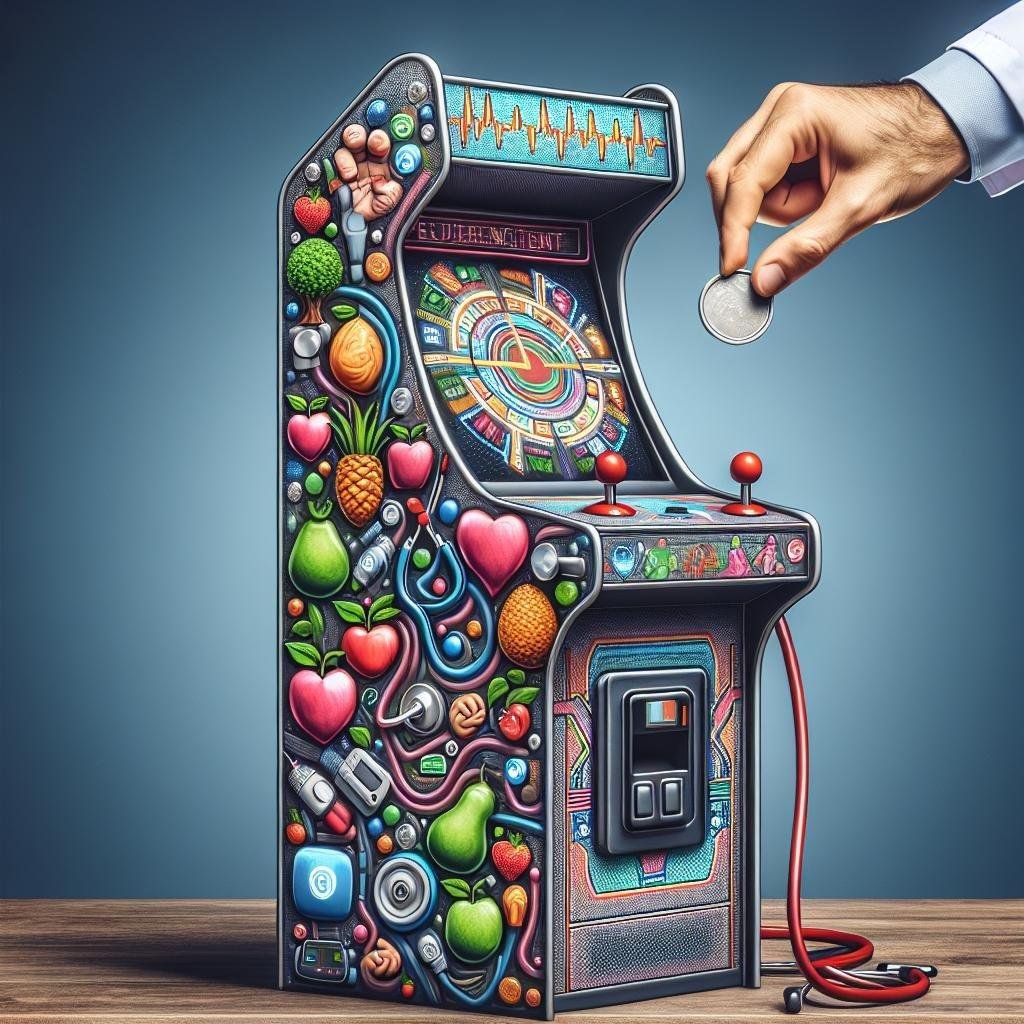In the rapidly evolving landscape of HealthTech, the imperative to enhance patient engagement continues to occupy a central role in the development of innovative healthcare solutions. Gamification, the strategic application of game design elements in non-gaming contexts, has emerged as a transformative approach to motivate users, foster adherence to treatment protocols, and promote healthier lifestyle choices. By leveraging mechanics such as rewards, challenges, and social interaction, gamification facilitates a more interactive and personalized healthcare experience, bridging the gap between clinical objectives and patient behavior. This article delves into the methodologies and applications of gamification within HealthTech, examining its potential to revolutionize patient engagement and yield measurable health outcomes. We will explore case studies, emerging technologies, and best practices that underscore the significance of integrating gamified solutions into patient care strategies, ultimately positioning healthcare providers to enhance satisfaction, compliance, and overall health literacy among patients.
Table of Contents
- Understanding the Role of Gamification in HealthTech Applications
- Design Principles for Effective Gamified Health Solutions
- Measuring Impact: Evaluating Patient Engagement Through Gamification
- Best Practices for Implementing Gamification Strategies in Healthcare Settings
- To Wrap It Up
Understanding the Role of Gamification in HealthTech Applications
Gamification in HealthTech leverages game design elements to enhance motivation and engagement among patients. By integrating features such as points, badges, leaderboards, and challenges, health applications can transform mundane health management tasks into interactive experiences. This interactive approach not only increases users’ adherence to their health regimens but also empowers them with a sense of achievement as they progress. The alignment of user goals with game mechanics leads to improved health behaviors, ultimately making a direct impact on patient outcomes.
Research indicates that incorporating gamified elements in health applications can significantly boost user retention and satisfaction. Key features that contribute to this success include:
- Feedback loops: Instant feedback allows users to understand their progress and areas needing improvement.
- Social sharing: This fosters community support and encourages competition, motivating users to stay engaged.
- Personalization: Customizable experiences tailored to individual preferences can enhance user commitment.
To illustrate the effectiveness of gamification in health applications, the following table summarizes studies showcasing positive outcome metrics:
| Study | Outcome | Engagement Increase |
|---|---|---|
| Diabetes Management | Improved glycemic control | 30% |
| Weight Loss Program | Increased physical activity | 25% |
| Mental Health App | Reduced anxiety levels | 40% |
Design Principles for Effective Gamified Health Solutions
To create effective gamified health solutions, the design must focus on several core principles that enhance patient engagement while ensuring that the goals of healthcare are met. These principles include:
- User-Centric Design: Solutions should be tailored to the needs and preferences of the target audience, integrating feedback from patients to ensure relevance.
- Clear Objectives: Gamification elements should be tied to specific health goals, whether it’s increasing exercise, improving medication adherence, or promoting healthy eating.
- Progress Tracking: Visual reminders of progress, such as dashboards or achievement badges, can motivate users by providing tangible evidence of their journey.
- Social Connectivity: Incorporating social features allows users to share experiences, compete with peers, or collaborate in challenges, fostering a sense of community.
- Rewards and Incentives: Effective gamification should use a variety of rewards—both intrinsic and extrinsic—to keep participants engaged and motivated.
Moreover, the integration of game mechanics can significantly influence user behavior and reinforce positive habits. It’s essential to create a seamless experience that minimizes barriers to participation. Successful tools often exhibit:
| Feature | Benefits |
|---|---|
| Intuitive Interface | Ensures ease of use, enhancing user satisfaction and retention. |
| Personalization | Tailors the experience to the individual, increasing relevance and effectiveness. |
| Feedback Mechanisms | Provides real-time feedback, encouraging continuous improvement in health behaviors. |
| Challenges and Levels | Creates a sense of achievement and progressive engagement through increasing difficulty. |
Measuring Impact: Evaluating Patient Engagement Through Gamification
Incorporating gamification into health technology not only engages patients but also provides measurable outcomes that reflect patient involvement and satisfaction. By utilizing key performance indicators (KPIs) such as adherence rates, total active users, and feedback scores, healthcare providers can gain insights into the effectiveness of gamification strategies. This systematic approach allows organizations to evaluate whether game-like elements, such as points, levels, and rewards, truly resonate with patients in enhancing their participation in health management. Each metric serves as a reflective surface, showcasing the shift in patient behavior and motivation.
To illustrate the impact of these strategies, consider the following table highlighting common metrics used to assess patient engagement through gamification:
| Metric | Description | Target Outcome |
|---|---|---|
| Adherence Rate | Percentage of patients following prescribed health activities | Increase in patient compliance |
| Daily Active Users | Count of users engaging with the app daily | Higher retention and usage rates |
| Feedback Scores | User satisfaction ratings and comments | Improved experience and interaction |
By continuously monitoring these metrics, healthcare organizations can adjust their gamification strategies to better meet the needs of patients. The cycle of evaluation not only drives innovation in health technologies but also empowers patients, making them active participants in their healthcare journey. Ultimately, measurable impact highlights the significance of gamification as a valuable tool for enhancing engagement and improving health outcomes.
Best Practices for Implementing Gamification Strategies in Healthcare Settings
To effectively integrate gamification into healthcare, a thorough assessment of the target audience’s needs and preferences is essential. Understanding the demographics of patients, their motivations, and their behavioral patterns can guide the design of engaging game mechanics that resonate with them. Focus on incorporating elements that encourage participation and motivation, such as point systems, badges, and leaderboards. Additionally, involving healthcare professionals in the development process ensures that the gamified system aligns with clinical practices and enhances workflow rather than complicating it.
Another crucial aspect is the continuous evaluation and iteration of gamification strategies. Collecting user feedback and analyzing performance metrics can provide insights into what elements are most effective and where adjustments are necessary. Establishing a responsive system that evolves based on patient interaction can significantly improve user engagement. It’s equally important to balance entertainment with educational content, ensuring patients not only enjoy the experience but also gain valuable health information. Consider incorporating features like:
- Interactive quizzes to reinforce learning
- Progress tracking to visualize improvement
- Social sharing options to foster community support
To Wrap It Up
the integration of gamification within the HealthTech sector represents a transformative approach to enhancing patient engagement and improving health outcomes. By leveraging game-design elements, such as motivation, rewards, and competition, healthcare providers can foster a more interactive and engaging environment for patients. This not only encourages adherence to treatment plans but also promotes a proactive attitude towards health management.
As the healthcare landscape continues to evolve, embracing innovative strategies like gamification can lead to more personalized and effective care solutions. Future research should focus on developing rigorous frameworks for implementing gamified interventions, assessing their long-term impacts on patient motivation and health-related behaviors.
Ultimately, the successful integration of gamification in HealthTech hinges on collaboration among healthcare professionals, technology developers, and patients themselves. By working together, stakeholders can create engaging solutions that not only enhance patient experiences but also drive meaningful health improvements. The potential benefits are immense, paving the way for a more dynamic and participatory model of healthcare delivery that lives up to the demands of a rapidly changing world.




